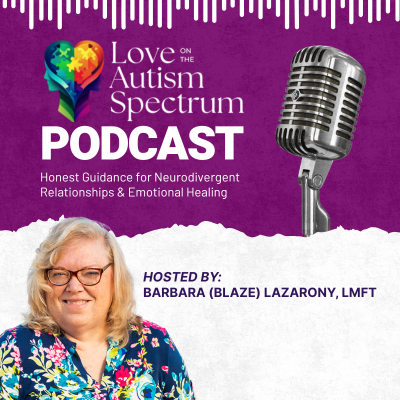Communication is the heartbeat of every relationship, this is especially true in neurotypical vs neurodivergent communication. It’s how we ask for what we need, express who we are, and try—often imperfectly—to understand each other. And yet, for many neurodivergent individuals and couples, communication can feel like one of the biggest sources of stress, disconnection, or shutdown.
A common challenge faced by neurodivergent people is communication difficulties, which can lead to misunderstandings with neurotypical individuals and create barriers to mutual understanding.
Not because we aren’t trying. But because we may be speaking completely different nervous system languages.
In this blog post, we’ll walk through the real-world differences between neurotypical and neurodivergent communication styles—not from a place of pathologizing, but from a place of compassion and clarity. Whether you’re neurodivergent, neurotypical, or a couple made of both, this guide is here to help you feel less alone and more equipped to bridge the gap.
3 Key Takeaways
- Neurotypical and neurodivergent brains have differences in cognitive processing, emotion, and social cues. Recognizing this can dramatically reduce miscommunication and resentment.
- Communication challenges in neurodiverse relationships are often rooted in nervous system mismatches, not character flaws or emotional deficiencies.
- When we understand each other’s defaults—and learn new tools together—communication becomes a place of healing instead of harm.
What Do Neurotypical vs Neurodivergent Mean?
Let’s name something right away: these terms are not perfect, and they’re not diagnoses.
But they are useful.
Neurotypical generally refers to individuals whose brains align with dominant social expectations. Neurotypical refers to individuals whose cognitive, social, and behavioral patterns align with societal norms. These expectations include implicit communication, reciprocal eye contact, subtle shifts in tone and pacing, and an instinct for “reading the room.” Neurotypical development is often measured by meeting certain developmental milestones in areas such as social interaction and learning.
Neurodivergent is an umbrella term describing brains that process, communicate, and relate differently than the dominant norm. This includes people with Autism, ADHD, AuDHD, dyslexia, sensory processing sensitivity, OCD, Tourette’s, cPTSD, and other developmental or psychological differences. It also includes folks who are “self-identified” and may not have a formal diagnosis but resonate deeply with these experiences.
These categories don’t define your worth. They describe the framework you’re operating from. And in relationships—especially intimate ones—this framework matters.
A Brief Introduction to Neurodiversity
The neurodiversity movement began as a pushback against the medical model that treats all cognitive differences as deficits to be cured or masked. Instead, neurodiversity recognizes that our brains are biologically diverse—just like our bodies, cultures, or learning styles.
Neurodiversity means:
- Autism isn’t a disease to fix, but a difference to understand.
- ADHD isn’t a failure of discipline—it’s a different kind of attention.
- Sensory overwhelm isn’t overreacting—it’s valid, lived experience.
About 15-20% of the global population is neurodivergent. The experiences, challenges, and strengths of neurodivergent individuals vary widely. That’s millions of people living, loving, working, and parenting in ways that challenge the “default settings” of a neurotypical world.
Neurodivergent Conditions: Beyond the Labels
Neurodivergent conditions represent a broad spectrum of neurological differences, each with its own unique strengths and challenges. This includes autism spectrum disorder, attention deficit hyperactivity disorder (ADHD), and learning disabilities like dyslexia, among many others. Neurodivergent individuals experience the world in ways that may differ from societal norms, especially in areas like sensory processing, cognitive functioning, and social interaction.
It’s important to remember that every neurodivergent person’s experience is unique—there is no single way to be neurodivergent. Some may have heightened sensitivity to sounds or lights, while others might process information in nonlinear or highly focused ways. These neurological differences are not deficits, but part of the diverse range of human experience.
By embracing neurodiversity and recognizing the broad spectrum of neurodivergent conditions, we move toward a more accepting society—one that values the contributions and perspectives of all individuals. Understanding and respecting these differences helps create environments where everyone can thrive.
Why Communication Is So Hard (and How We Miss Each Other)
In therapy with neurodiverse couples, I often hear things like:
“I say something and he just…shuts down.” “She keeps talking and I feel like I’m drowning in words.” “I don’t know what I did wrong—I thought I answered her question.” “He never seems to hear the emotional subtext. It’s like we’re speaking different languages.”
And the truth is: you probably are.
Let’s take a look at these different communication styles between neurotypical and neurodivergent individuals more closely.
Neurotypical Communication Patterns
Neurotypical communication tends to prioritize:
- Indirectness: Requests may be implied rather than directly stated.
- Tone and context: Emotions are often conveyed through inflection, facial expression, and body language.
- Reciprocity: The back-and-forth rhythm of conversation is intuitive and often unspoken.
- Subtext: Meaning isn’t always in the words—it’s “between the lines.”
- Nonverbal cues: Eye contact, head nods, and posture all carry meaning.
Neurotypical individuals often rely on social skills such as reading body language and interpreting subtext to navigate conversations.
For neurotypical folks, this type of communication may feel smooth, even automatic.
But for neurodivergent people? It can feel like trying to decode a language with half the alphabet missing.
Neurodivergent Communication Patterns
Neurodivergent communication is often characterized by a communication style that is straightforward, direct, and literal. It is often:
- Literal: Words mean exactly what they say. Subtext may be missed or feel dishonest.
- Direct: Asking for something directly is not considered rude—it’s efficient.
- Focused or nonlinear: Some people speak in detailed monologues. Others bounce between ideas.
- Emotionally honest: You might get the unfiltered truth, not a polite placeholder.
- Sensory-sensitive: Noise, tone, pace, and visual cues may impact someone’s ability to process or respond.
Autistic communication can include unique speech patterns such as echolalia, which reflect neurological differences associated with autism.
For example, an autistic person might say, “I’m not interested in that conversation,” which sounds harsh to a neurotypical ear—but is simply truthful, with no intention to harm. Info dumping or talking at length about special interests can also serve as a form of self regulation for neurodivergent individuals, helping them manage emotions or sensory overload.
Or a partner with ADHD might interrupt you mid-sentence, not because they don’t care, but because their brain is trying not to lose a thread of thought that’s disappearing fast.
Detailed monologues often center around special interests, which are topics of deep passion for many neurodivergent people.
The Autistic Person: Unique Needs and Communication Challenges
The communication styles of autistic individuals are often distinct and can be misunderstood by neurotypical people. An autistic person may use direct language, expressing exactly what they mean without relying on subtle cues or indirect hints. While this approach is honest and efficient, it can sometimes be misread as blunt or insensitive by those used to neurotypical communication styles.
To foster effective communication with autistic people, it’s essential to practice active listening and use clear, straightforward language. Avoiding indirect language and ambiguous statements helps prevent confusion and builds trust. Additionally, many autistic individuals experience differences in sensory processing, which can affect how they process information and engage in social interactions. Being mindful of sensory needs—such as minimizing background noise or allowing for breaks—can make a significant difference.
By respecting the communication preferences of autistic individuals and recognizing their unique needs, we can create stronger connections and more meaningful interactions. Embracing these differences is key to building an inclusive and supportive environment for everyone.
A Real-Life Example: The “Are You Okay?” Misfire
Imagine this:
A neurotypical partner senses something is off and asks gently, “Are you okay?”
A neurodivergent partner replies flatly, “Yes.”
End of conversation.
But internally, the neurodivergent partner might be thinking,
“I’m overwhelmed, but I don’t know how to explain it. I need to stim. I need silence. I don’t want to be a burden. So I’ll just say yes.”
They may also be processing information differently, which can make it difficult to articulate their feelings in the moment.
Meanwhile, the neurotypical partner hears that flat “yes” and assumes:
“They’re annoyed with me. They’re shutting me out. They don’t want to connect.”
And now, both partners feel hurt. But neither did anything wrong.
The Communication Gap Is a Nervous System Gap
Here’s something I say often in my practice:
“This isn’t about logic—it’s about regulation.”
Communication breakdowns in neurodiverse relationships aren’t just about words. They’re about nervous system capacity.
If one person needs time to process and the other needs immediate connection, their needs will collide. If one partner is flooded and shuts down, and the other interprets silence as rejection, the cycle continues.
Understanding the nervous system differences underneath communication styles can radically shift how we interpret each other’s behavior.
Differences in executive functioning—such as planning, goal-setting, and self-control—can also contribute to communication breakdowns in neurodiverse relationships.
Common Misunderstandings in Neurodiverse Communication
| Misinterpretation | What Might Be Happening |
|---|---|
| “You’re being rude.” | “I’m being direct because that feels respectful to me.” |
| “You’re not listening.” | “I’m processing your words internally, not making eye contact.” |
| “You talk too much.” | “I’m monologuing because that’s how I organize my thoughts.” |
| “You shut down.” | “I’m dysregulated and need quiet to reset.” |
| “You’re too sensitive.” | “I’m having a sensory response to something you might not even notice.” |
These are just a few of the many ways neurodivergent and neurotypical nervous systems collide—not because of a lack of love, but because of a lack of shared language. Many misunderstandings stem from differences in social communication styles.
Strategies for Bridging the Gap
So how do we move forward?
One important concept to consider is the double empathy problem. This idea highlights that misunderstandings and communication breakdowns between neurotypical and neurodivergent individuals are often mutual. Rather than empathy challenges being one-sided, the double empathy problem emphasizes that both groups may struggle to understand each other’s perspectives, social cues, and emotional expressions, which can hinder effective connection and communication.
1. Learn Each Other’s Defaults
Talk about how you each prefer to communicate. What helps you feel understood? What shuts you down? What do you wish your partner would stop assuming? It’s important to recognize and respect the unique communication needs of a neurodivergent person, as their cognitive, social, or sensory differences may impact how they express themselves and interpret others.
2. Use Clear, Concrete Language
When in doubt, say what you mean. And if you’re the one listening, don’t read between the lines—ask for clarification.
Example: Instead of “I’m fine,” try “I’m overwhelmed and need a 15-minute break before we talk.”
3. Offer Sensory and Emotional Context
Especially for neurodivergent folks, it helps to name what’s happening.
“I’m not mad, I’m overstimulated.” “I want to connect, but my brain is tired.” “I need to move while I listen—I’m still with you.” “I’m experiencing sensory overload and need a break from conversation.”
4. Create Repair Scripts
Many couples benefit from having go-to phrases or scripts that help soothe tense moments.
Try:
- “Let’s pause and come back to this.”
- “Can we both say what we meant to communicate?”
- “What do you need right now—connection or space?”
The Gifts of Neurodivergent Communication
Let’s be clear: neurodivergent people bring so much to communication when they’re allowed to be themselves.
- Deep emotional honesty
- Creative ways of expression
- Capacity for intensity and presence
- Precision in language
- Integrity in truth-telling
When neurodivergent communication isn’t masked, criticized, or minimized, it becomes a powerful form of intimacy.
Supporting Neurodivergent + Neurotypical Couples
When one partner is neurotypical and the other is neurodivergent, both people often end up feeling unseen.
The neurotypical partner might feel ignored or emotionally neglected.
The neurodivergent partner might feel constantly misread or pressured to mask.
Here’s what support looks like:
- Validation for both nervous systems. There’s no one right way to be.
- Language tools and scripts. These help build shared meaning and reduce reactivity.
- Slow, steady practice. Communication isn’t a quick fix. It’s a relational skillset you can grow together.
Neurodiversity affirming therapy is a supportive approach that recognizes and values both neurodivergent and neurotypical experiences, and can help couples build understanding and connection.
As a therapist, I specialize in helping couples navigate these exact dynamics. With the right support, I’ve seen relationships shift from shutdown to connection, from confusion to clarity. Book a FREE “Clarity & Connection” Zoom session and get personalized support for your relationship or neurodivergent journey.
Workplace Inclusivity for Neurodiversity
Creating a truly inclusive workplace means valuing and supporting employees who are neurodivergent. This starts with providing reasonable accommodations, such as flexible work hours, sensory-friendly spaces, and clear, direct communication. Encouraging open dialogue about individual needs and preferences helps foster a culture of understanding and respect.
Employers can further support neurodivergent employees by offering training on neurodiversity and inclusion, and by actively seeking out the unique perspectives that neurodivergent team members bring to the organization. These diverse viewpoints can drive innovation, creativity, and productivity, benefiting the entire organization. I offer neurodiversity training for individuals and workplaces through my Neurodiverse Executive Coaching brand.
By embracing neurodiversity and encouraging open dialogue, workplaces become more accepting and supportive for both neurodivergent and neurotypical employees. This not only enhances communication but also creates an environment where everyone can contribute their best.
Language and Advocacy in Neurodiversity
The words we use matter, especially when it comes to bridging the communication gap between neurotypical and neurodivergent individuals. Using respectful, person-centered language helps create an accepting society and supports the goals of the neurodiversity movement. Avoiding stigmatizing terms and honoring each person’s communication preferences are essential steps toward effective communication.
Advocacy in neurodiversity means promoting the rights and needs of neurodivergent individuals, whether in education, employment, or healthcare. The neurodiversity movement encourages self-advocacy and empowerment, giving neurodivergent people a voice in shaping their own experiences. Active listening and open, honest dialogue are key to understanding and respecting the diverse range of human communication styles.
By choosing our words thoughtfully and advocating for inclusivity, we help close the communication gap and build a society where everyone’s differences are valued and respected.
Creating More Inclusive Communication Spaces
Whether in relationships, workplaces, or families, making space for neurodivergent communication changes everything. Traditional educational settings often lack accommodations for neurodivergent children, highlighting the need for more inclusive communication approaches that adapt to their unique styles and sensory needs.
- Use multiple forms of communication: written, visual, verbal.
- Slow the pace. Give people time to respond.
- Ask about sensory needs and regulation cues.
- Avoid sarcasm, unless you know it’s understood.
- Be clear. Then clearer. Then kind.
Remember: communication isn’t about perfection. It’s about presence.
Summary
Understanding the difference between neurotypical and neurodivergent communication isn’t just helpful—it’s essential. Especially in relationships, this awareness can be the difference between chronic misunderstanding and true emotional intimacy. Communication differences between neurotypical adults and autistic adults can significantly impact relationships, mental health, and access to support.
Neurodivergent communication isn’t broken. It’s often more direct, sensory-informed, and radically honest. Neurotypical communication isn’t superior—it’s just the default our systems are built around.
We need both. And we need bridges between them.
Whether you’re the neurodivergent partner, the neurotypical one, or somewhere in between, this work begins with curiosity, not criticism. With compassion, not correction.
You don’t need to change who you are. You just need tools that honor how you’re built.
FAQs
What does it mean to be neurodivergent?
Neurodivergent refers to individuals whose brain functions differ from societal norms. This includes Autism, ADHD, dyslexia, OCD, cPTSD, and more. Neurodivergence is not a deficit—it’s a difference.
What are some examples of communication challenges in neurodiverse relationships?
Misunderstandings around tone, literal vs. implied language, shutdowns, sensory overwhelm, pacing, and perceived emotional distance are common. These challenges often stem from nervous system differences, not lack of love.
Can neurodivergent and neurotypical people have successful relationships?
Absolutely. With education, shared language tools, and emotional safety, many neurodiverse couples build deep, resilient connections. It just takes intention and support.
How can I support a neurodivergent partner?
- Respect their processing style and sensory needs
- Ask rather than assume
- Offer clear language, patience, and co-regulation
- Learn about their specific neurotype—and how it shows up for them
- Consider couples therapy with a neurodivergent-affirming therapist







